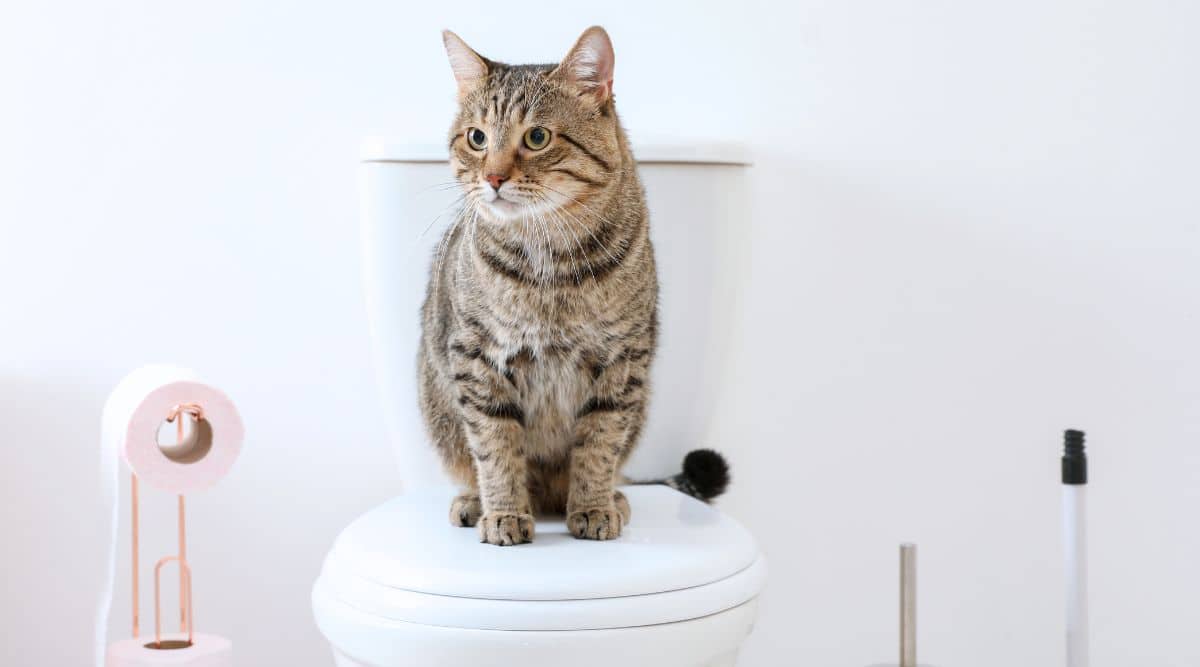Dangers of Flushing Cat Poop in Your Toilet - Precautionary Steps
Dangers of Flushing Cat Poop in Your Toilet - Precautionary Steps
Blog Article
We have stumbled upon this article relating to How to Dispose of Cat Poop and Litter Without Plastic Bags directly below on the internet and think it made good sense to write about it with you here.

Intro
As feline owners, it's necessary to be mindful of how we get rid of our feline buddies' waste. While it might seem convenient to flush pet cat poop down the bathroom, this practice can have detrimental consequences for both the environment and human wellness.
Ecological Impact
Purging cat poop introduces hazardous pathogens and bloodsuckers into the supply of water, posing a substantial risk to marine ecological communities. These pollutants can negatively influence aquatic life and compromise water top quality.
Health and wellness Risks
In addition to ecological issues, flushing feline waste can also posture health and wellness threats to humans. Feline feces might contain Toxoplasma gondii, a bloodsucker that can create toxoplasmosis-- a potentially severe illness, especially for pregnant ladies and people with weakened body immune systems.
Alternatives to Flushing
Thankfully, there are much safer and more responsible means to deal with pet cat poop. Take into consideration the following options:
1. Scoop and Dispose in Trash
One of the most usual method of throwing away feline poop is to scoop it into an eco-friendly bag and toss it in the trash. Make sure to make use of a committed trash inside story and take care of the waste promptly.
2. Use Biodegradable Litter
Select naturally degradable cat litter made from materials such as corn or wheat. These litters are environmentally friendly and can be safely thrown away in the trash.
3. Bury in the Yard
If you have a yard, consider burying cat waste in a designated area far from vegetable gardens and water sources. Make certain to dig deep adequate to avoid contamination of groundwater.
4. Install a Pet Waste Disposal System
Buy a pet dog waste disposal system specifically created for feline waste. These systems use enzymes to break down the waste, reducing smell and ecological effect.
Conclusion
Accountable animal possession extends past offering food and sanctuary-- it also includes proper waste monitoring. By refraining from flushing feline poop down the toilet and selecting alternative disposal techniques, we can lessen our ecological footprint and secure human wellness.
Why You Should NEVER Flush Cat Poop (and/or Litter) Down Your Toilet
The Problem with Litter
The main function of litter is to solidify and adhere to your cat’s waste. While this makes litter excellent for collecting cat poop and urine, it’s also the exact property that makes it a nightmare when flushed down the toilet.
Cat litter can and will clog pipes. There is non-clumping litter, but it’s still quite heavy and can build up in pipes. This is true even of supposed “flushable litter.”
The problems only compound when the litter is already clumped into cat waste. Toilet paper is among the more flushable things, and even too much of that will clog a toilet.
The Problem with Cat Poop
Sewers and septic systems are designed with human waste in mind. The microbes that help break down human waste don’t work on cat waste. Additionally, cat poop plays host to the parasite Toxoplasma gondii.
When flushed, this parasite can enter the environment in places it was never meant to, posing a risk to pregnant women, their unborn children, and other people with compromised immune systems. While it might not seem possible, flushing cat poop can indeed introduce this parasite to the public water supply.
These reasons are why, even if you’ve trained your cat to go on the toilet and flush, which is possible, it’s still not a good idea. Also, pregnant women and the immunocompromised shouldn’t change litter, either.
How to Handle Litter
The best way to handle litter is to simply put it in a plastic bag and place it in the trash. Avoiding environmental risks and possible plumbing damage is worth the extra effort.
You can also invest in devices that seal away your cat’s waste in a separate compartment, so you don’t have to change the litter nearly as often. They’re also safer for pet owners because they limit the possibility of Toxoplasma gondii exposure.
Disposing of litter the old-fashioned way will ensure you won’t have to worry about any issues that flushing the waste can potentially cause.
Take Care of Clogged Pipes with Stephens Plumbing, Heating & Air Conditioning
The reasons you should never flush cat poop down your toilet are numerous, but sometimes the inevitable happens despite your best efforts.
Stephens Plumbing, Heating & Air Conditioning is ready to help if you’re experiencing litter-blocked plumbing. Whether you need us in an emergency or want to schedule regular maintenance, we’re here for you.
https://www.stephensplumbing.net/bathroom-plumbing/never-flush-cat-poop-down-your-toilet/

We are very occupied with Don’t flush cat feces down the toilet and I hope you appreciated the entire blog posting. Enjoyed our entry? Please share it. Let another person find it. Kudos for your time. Visit us again soon.
Call Today Report this page